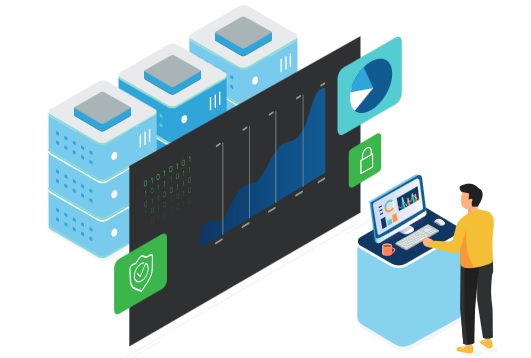Companies have significantly sped up their digital transformation efforts in the past year, a theme anticipated to persist beyond the pandemic, according to the 2021 State of Application Strategy from F5. With limited in-person interactions, applications — and the digital experiences they facilitate — have become synonymous with an organization's presence and ability to thrive.

"This year's report highlights the many contrasting priorities that IT teams are currently facing. Of course, there's the familiar one of flexibility and convenience versus security, but then you also have organizations generating an immense amount of data while seeking ways to extract meaningful insights from that data," said Kara Sprague, EVP and GM, BIG-IP at F5. "Similarly, we find companies relying more on automation to reduce operating costs while increasingly tailoring applications for customer-centric digital experiences. Many of these are a function of the speed in which the industry has responded to COVID — in that it forced a myriad of operational considerations, concerns and opportunities to be addressed simultaneously almost overnight."
Improving connectivity, reducing latency, ensuring security, and leveraging data insights are now even more essential, as IT teams have found it nearly impossible to keep pace with the rate of change and digitization of experiences.
Moreover, while microservices, APIs, and containers may accelerate individual application rollouts from a DevOps perspective, the reach and pervasiveness of modern apps has also resulted in heightened complexity — with many organizations lacking the skill sets to truly streamline deployments. This is especially the case when managing broader application portfolios that span multiple generations of application architectures.
Correspondingly, this new research centers on the following four trends, pointing to an elevated interest in cloud and as-a-service offerings, edge computing, and application security and delivery technologies that require less expertise to deploy and manage while providing out-of-the-box insights.
1. Continued Modernization of Apps and Architectures to Enable Better Digital Experiences
According to the survey, 87% of organizations operate both modern and traditional architectures, with modernization deemed necessary when legacy systems are too rigid to adapt to rapidly changing business conditions.
More than three-quarters of respondents (77%) reported that they are presently modernizing internal or customer-facing applications, with APIs as the primary method given their ability to combine capabilities of traditional and modern application components.
In addition, the percentage of organizations maintaining multiple app architectures is growing, with the survey also affirming that as-a-service and managed service offerings continue to be viewed as replacements for some applications where vendors can provide cloud-friendly alternatives.
2. The Rise of the Edge as Containerization Expands
Edge computing generally refers to operations performed outside of a centralized data center. With employees and consumers logging on from increasingly distributed locations, edge computing has been identified as a significant means to reduce latency and increase the real-time responsiveness required by today's applications.
Accordingly, the edge must evolve to better support modular application components such as containers residing across multiple cloud locations. In addition to promoting faster and more efficient deployments, placing containerized applications at the edge can improve scalability and the customer experience.
Demonstrating an appetite for these advantages, survey results note that 76% of organizations have implemented or are actively planning edge deployments, with improving application performance and collecting data/enabling analytics as the primary drivers.
3. Accelerating Growth in SaaS and Cloud Deployments, Balancing Flexibility and Security
With the percentage of applications deployed in the cloud rising‚ more than two-thirds of respondents (68%) are also hosting at least some of their application security and delivery technologies in the cloud.
Simultaneously, organizations are positioning themselves to address the architectural complexity that results from adding SaaS and edge solutions, maintaining on-premises and multi-cloud environments, and modernizing applications.
Successful integration of these elements within a cohesive application strategy will require up-leveling how tools, skill sets, IT processes, and analytics are applied across dynamic architectures. Security continues to be a key driver, with efforts to stay ahead of attackers frequently requiring capabilities beyond what organizations have the resources to manage on premises.
Further highlighting this challenge, SaaS for security was identified as the top strategic trend among survey respondents.
4. The Importance of Telemetry in Meeting Evolving Customer and Business Expectations
Harnessing telemetry to turn large volumes of data into business insights is essential for adaptive applications. Even still, an overwhelming 95% of respondents believe they are missing insights related to performance, security, and availability, indicating a desire for a much clearer end-to-end picture than their current monitoring and analytics solutions provide.
Individuals across organizational roles were in uniform agreement on the topic, citing the top three insights missed as: the root cause of application issues; performance degradation causes; and potential attack details.
In parallel, nearly three-quarters of respondents intend to leverage AI to better utilize telemetry data, and more than half are looking toward AI to help their organizations transition to applications that can automatically adapt to better defend themselves and respond to changing conditions.
Methodology: The report represents more than 1,500 respondents worldwide from a breadth of industries, organization sizes, and professional roles. Fundamentally, the survey focused on IT decision-makers to best highlight the priorities, concerns, and expectations of those most responsible for meeting the toughest challenges of today's digital economy. Together, their responses form a compelling perspective of how organizations are evolving application strategies to better serve the current and anticipated needs of customers.


